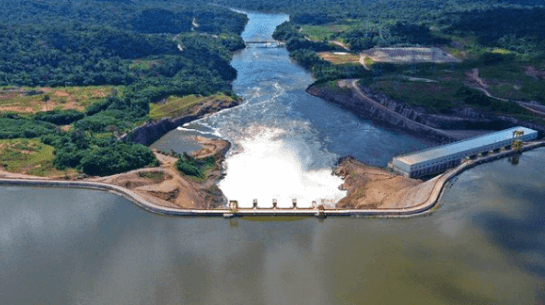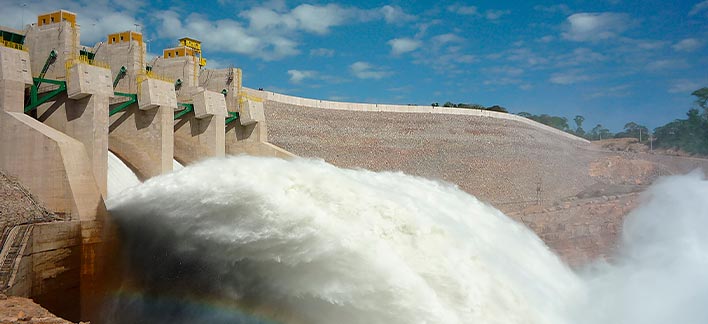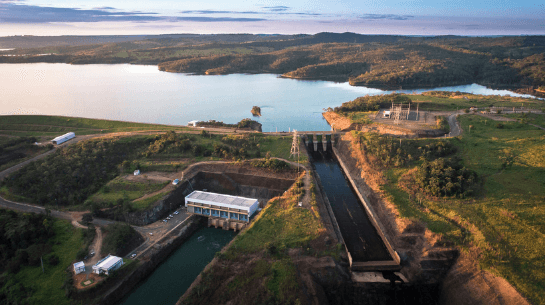- Products and Solutions

Hydro Power
Hydropower is the main source of energy in Brazil, with four Neoenergia plants contributing to clean and renewable generation in the country.
What is hydropower?

Water energy is that which transforms the force of water into electricity. This process takes place in hydroelectric power plants, which take advantage of the hydraulic potential of rivers. Those located on plateaus are the most suitable for this purpose, because the more unevenness, the more intense the force of the water will be and, as a consequence, the more energy will be produced.
How is hydropower produced?
In short, what happens in this whole process is that potential energy is transformed into kinetic (in motion) and, finally, into electrical. After all this, the water returns to the river through the escape channel and the electricity produced is conducted to the National Interconnected System (SIN) and distribution system to finally reach the final consumer.
Is hydropower renewable?
Yes, since it uses a renewable resource, which is water, as a source. Despite the need for conscious consumption, water is constantly being renewed, naturally, in its cycle of evaporation, rain and return to the soil. Therefore, it is a renewable and clean energy source.

How to take advantage of water energy? What is it used for?
In addition to hydroelectric dams, water energy can be used in simpler systems, especially useful for supplying small rural properties. This is the case of water wheels, probably the first method of mechanical energy to replace human and animal labor. Centrifugal pumps, from irrigation systems, are another example.
And, in general, the energy generated by hydroelectric dams can be injected into the electrical system faster than that from any other source. Considering the increasingly constant need for fast and flexible generation sources, especially at peak times, hydropower stands out, keeping supply and demand in balance.
Advantages of hydropower
- is renewable, using nature's inexhaustible resource;
- is clean;
- water is reused after use;
- the system collects rainwater for consumption;
- Brazil has a favorable geography to generate it;
- has a low cost to the consumer;
- power plants have a long lifespan;
- are more stable, especially those with reservoirs, providing planning according to demand.

Hydroelectric generation: a clean and sustainable energy source
Discover how Neoenergia generates energy from the force of water in its hydroelectric plants and the main information.
Learn more about the Itapebi Hydroelectric Power Plant
Please enter a valid video URL.
The URL can point to any video file or a Youtube video.




